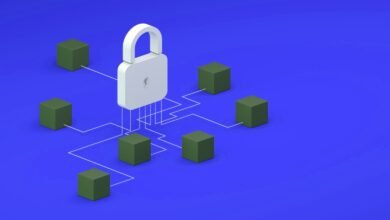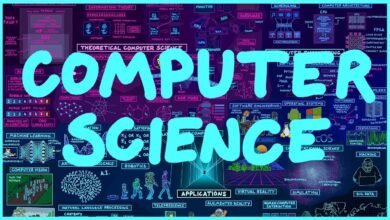How Blockchain Is Reshaping the Internet in 2025
Blockchain technology is revolutionizing the 2025 internet through decentralization, Web3 and secure smart contracts Discover the future of digital transformation.

Blockchain Is Reshaping technology is driving the most significant transformation of the internet since the advent of cloud computing. By 2025, this revolutionary technology is expected to redefine digital interactions through decentralized networks, enhanced security, and user-controlled ecosystems. Unlike today’s internet, dominated by centralized platforms that harvest and monetize user data, blockchain-powered solutions promise a more transparent, secure, and equitable online experience. From Web3 applications to decentralized finance (DeFi), the shift toward a trustless and permissionless internet is already underway, setting the stage for a new era of digital innovation.
The rapid evolution of Blockchain Is Reshaping-based systems is challenging traditional models of data storage, financial transactions, and online identity verification. As we approach 2025, key advancements such as smart contracts, tokenization, and decentralized autonomous organizations (DAOs) are reshaping industries ranging from social media to supply chain management. This article explores how blockchain technology is fundamentally altering the internet, empowering users with true ownership of their digital assets while eliminating reliance on intermediaries. The implications are profound ushering in a future where privacy, security, and decentralization take center stage in the digital world.
How Blockchain Is Reshaping the Internet in 2025
The Rise of Decentralized Web
The current internet, often referred to as Web2, relies heavily on centralized servers owned by corporations. Web3, powered by blockchain, introduces a decentralized model where users control their data. Instead of storing information on single servers, distributed ledger technology (DLT) ensures data is spread across multiple nodes, reducing the risk of censorship and outages. Platforms like Ethereum, Polka dot, and Solana are leading this movement, enabling peer-to-peer interactions without intermediaries. This shift not only enhances privacy but also allows users to monetize their own data through cryptocurrencies and NFTs.
Enhanced Security and Privacy
Immutable Ledger Prevents Data Tampering
Blockchain Is Reshaping decentralized ledger ensures that once data is recorded, it cannot be altered or deleted without network consensus. Unlike traditional databases, where hackers can exploit a single point of failure, blockchain distributes data across multiple nodes. This tamper-proof structure makes unauthorized changes nearly impossible, significantly reducing risks of data breaches and fraudulent activities.
Advanced Encryption & Consensus Mechanisms
Blockchain Is Reshaping employs cryptographic hashing and consensus protocols like Proof of Work (PoW) and Proof of Stake (PoS) to validate transactions securely. These mechanisms ensure that only verified participants can add new blocks to the chain, preventing malicious attacks. Additionally, end-to-end encryption protects sensitive data, making blockchain far more resilient against cyber threats compared to centralized systems.
Self-Sovereign Identity Reduces Fraud
Traditional identity verification relies on third-party intermediaries, which are prime targets for identity theft. Blockchain Is Reshaping introduces self-sovereign identity (SSI), allowing users to store and control their digital credentials securely. With decentralized identifiers (DIDs) and zero-knowledge proofs, individuals can authenticate themselves without exposing personal data, minimizing risks of phishing and impersonation scams.
Smart Contracts Automating Processes
Smart contracts are self-executing agreements coded on blockchain networks, eliminating the need for intermediaries. In 2025, these contracts are expected to automate everything from supply chain management to legal Blockchain Is Reshaping. Platforms like Ethereum and Cardano enable developers to create decentralized applications (dApps) that run autonomously. Businesses can reduce costs and increase efficiency by using smart contracts for payroll, insurance claims, and even voting systems. This automation not only speeds up processes but also minimizes human error and fraud.
Tokenization and Digital Ownership
The concept of digital ownership is being revolutionized by Blockchain Is Reshaping through tokenization. Non-fungible tokens (NFTs) allow users to own unique digital assets, from art to virtual real estate. Meanwhile, fungible tokens (like cryptocurrencies) enable seamless transactions across borders. In 2025, we can expect more industries such as gaming, music, and real estate to adopt tokenized ecosystems. This shift empowers creators by allowing them to sell their work directly to consumers without middlemen taking large cuts.
Decentralized Finance Replacing Traditional Banking
DeFi is one of the most disruptive applications of Blockchain Is Reshaping, offering financial services without banks. By 2025, DeFi platforms could replace traditional banking for millions of users. Features like yield farming, lending protocols, and stablecoins provide accessible and transparent alternatives to conventional finance. Since DeFi operates on public blockchains, transactions are faster, cheaper, and more inclusive. This system is particularly beneficial for the unbanked population, giving them access to loans and savings without needing a credit history.
Blockchain and the Future of Social Media
Centralized social media platforms face criticism for data misuse and algorithmic bias. Decentralized social networks, built on Blockchain Is Reshaping, offer a solution by giving users full control over their content. Platforms like Mastodon and Steemit reward creators with cryptocurrencies instead of ad revenue. In 2025, we may see mainstream adoption of these networks, where content moderation is community-driven rather than dictated by corporations. This model promotes free speech while reducing misinformation and censorship.
Challenges and Limitations
Scalability Limitations
The scalability limitations of current Blockchain Is Reshaping networks pose significant adoption barriers, with Bitcoin’s 7 TPS and Ethereum’s 30 TPS capacity leading to chronic network congestion and exorbitant gas fees during high demand periods. To overcome these throughput constraints, the ecosystem is developing multi-pronged scaling solutions: Layer-2 protocols like Lightning Network and Optimistic Rollups process transactions off-chain while maintaining main net security; sharding techniques partition networks into parallel chains to exponentially increase capacity.
Energy Consumption Concerns
The energy-intensive nature of Proof-of-Work (PoW) Blockchain Is Reshaping, exemplified by Bitcoin’s annual consumption rivaling mid-sized countries, has prompted the industry to develop sustainable alternatives. A major shift occurred with Ethereum’s transition to Proof-of-Stake (PoS) through “The Merge,” slashing its energy use by 99.95% while maintaining security. Beyond protocol changes, carbon-neutral mining initiatives are gaining traction, leveraging renewable energy sources and carbon offset programs to mitigate environmental impact.
Regulatory Uncertainty
The regulatory landscape for crypto assets and DeFi protocols remains fragmented, with governments worldwide adopting divergent approaches from outright bans to progressive embrace creating significant compliance hurdles. Key challenges include taxation complexities, as crypto transactions often span jurisdictions with conflicting reporting requirements and implementing AML/KYC measures on decentralized systems designed for anonymity. These regulatory gray areas stifle institutional adoption and leave consumers vulnerable.
Read More: How to Start a YouTube Tech Channel with Just Your Phone
Conclusion
Blockchain Is Reshaping is undeniably revolutionizing the internet as we know it, paving the way for a more decentralized, secure, and user-empowered digital future. By 2025, innovations like Web3, DeFi, and smart contracts will have fundamentally transformed how we interact online, shifting power away from centralized entities and toward individual users. This paradigm change promises greater transparency, reduced censorship, and new economic opportunities through tokenization and decentralized applications. While challenges remain, the trajectory is clear: blockchain is building the foundation for a more open and equitable internet.
As adoption accelerates, businesses, developers, and everyday users must prepare for this Blockchain Is Reshaping-driven evolution. The technology’s potential to redefine digital ownership, streamline transactions, and enhance privacy positions it as the backbone of tomorrow’s internet. Those who embrace these changes early will lead the charge in shaping a web that prioritizes security, autonomy, and innovation. The internet of 2025 won’t just be faster or smarter it will be fundamentally fairer, thanks to the transformative power of blockchain technology.
FAQs
How does blockchain improve internet security?
Blockchain uses encryption and decentralized ledgers to prevent unauthorized access and tampering.
What is Web3, and how is it different from Web2?
Web3 is a decentralized internet where users control their data, unlike Web2, which relies on centralized platforms.
Can blockchain replace traditional banking?
DeFi offers banking services without intermediaries, making it a viable alternative for many users.
What are the challenges of blockchain adoption?
Issues like scalability, energy use, and regulation must be resolved for mass adoption.
How do smart contracts work?
Smart contracts automatically execute agreements when predefined conditions are met, removing the need for intermediaries.












One Comment